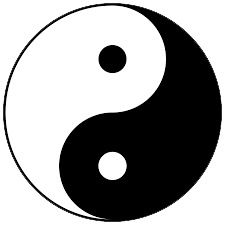Yang Style Tai Chi Chuan
Yang Style ( pronounced “Yong”)
Click Yin Yang Symbol to learn more about the history and different Tai Chi and Qigong styles.
Yang style is one of the most popular styles of tai chi practiced in the world. Yang Lu-chan created this style in the 19th century and has been refined over the years by many practitioners mostly famously by Yang Cheng-fu and Cheng Man-Ch’ing. Over the years the form has evolved into what is known as the Long 108 Form, Yang 64, Yang 40, Yang 24 and Yang 37. The numbers represent the number of postures in the form.
Currently, we offer a class in Simplified Yang 24 and 42 combined form. Private lessons in Cheng Man- Ch’ing (CMC)Yang Style 37 Short Form are available.
To Learn More About the Yang Tai Chi Classes Click below
Who Participates in Yang Forms?
The corner stone of Tai Chi practice is the solo exercise or what tai chi players refer to as –the Form.
Participate in Yang Style classes to experience the classic Chinese exercise for health. Graceful in movement, slow in tempo, relaxed and fluid in beautiful and natural postures– it’s meditation in motion. Emphasis is placed on body alignment and stance is upright to medium depth and length although that is adjusted according to the student’s ability and body. Hands are soft and full of intention as the body and spine relax with head top suspended from above. Breath is gentle, visual and mental concentration deepens as weight changes from one foot to the other. The waist is leading and connecting the upper and lower body creating subtle energy patterns. Movements are slow and not strained. Because the body is staying at one height and in good alignment, core muscles are being used while the other muscles, such as the shoulder muscles, are letting go. This is how tai chi can transform your body, strengthening and improving flexibility while also relaxing the mind and body.
Weekly classes focus on correct body alignment and relaxation, essential principles of form, foundation movements and postures that when linked together are called “The Form”. The class will also explore additional Qigong exercises and fundamental stances to sense and cultivate Qi. The main focus will be on the health aspects of the form and integrating the practice of tai chi into daily life.
Yang 24 class
This beginning class is open to people with little or no prior knowledge of Tai Chi, who want a shorter adaptable form or who have had various introductions to martial arts and tai chi. Adaptable in this case means changed to fit your health or physical condition. It could be that you are looking for a beginning class, or athletic and want an introduction before going on to the more complex 42 or that you have a health issue that requires changing a few of the stances to fit your body.
History
This form is also known as the Beijing 24 form, the 24 step form, the Peking form, simplified tai chi and even just the 24 postures.
This simplified tai chi form was created in 1956 by the National Physical Culture and Sports Commission of the People’s Republic of China as part of the drive to document and standardize training and introduce competition forms. What they found was a form with higher stances and able to be learned and practiced by all ages and all conditions yet keeping all the characteristic postures of the family yang style. Recently, variations of the 24 yang form are being used to study the effects of tai chi on health.
42 Combined Form
The 42 combined form contains the best movements of Yang, Wu, Chen, and Sun styles of traditional Tai Chi. It is learned and practiced at a consistent tempo and smooth flow of yang with a subtle touch of spiral energy; yet uses the characteristic speed and feel during the movements for each different style. For example, Chen has lower stances and powerful explosive moves powered by spiral energy and fajing. Sun style has a follow-up step and built-in qigong. The Wu movements are varied in high and low stances and some are the most difficult moves of the form. Here at CTC, the 42 is learned as a natural progression step from the 24 or can be used as a beginning class for those who are in good physical shape. There are challenges in this form that make it fun–kicks, stomps, slides and 360 turns–all of which can be modified to each student’s ability.
History
It was created in 1989 by grandmaster Li De Yin for the Chinese Sports Committee. The 42-form has received a lot of positive attention for being a challenging, fluid form that loads the body with energy (qi). Today it is a popular form for competition as well as for personal health benefits.
If you have any questions about your ability and class to choose, please contact Cathi.
